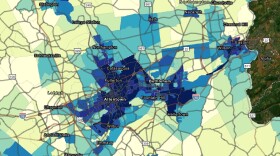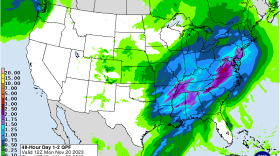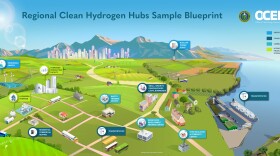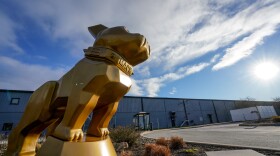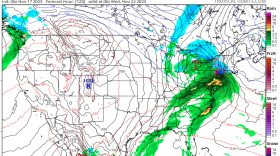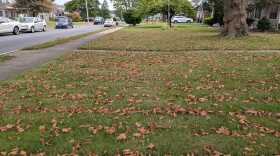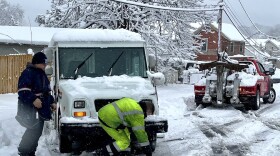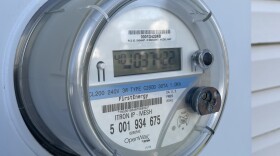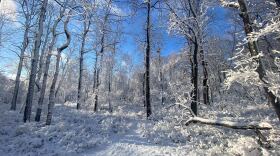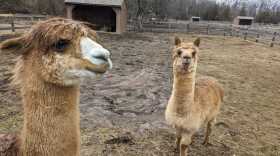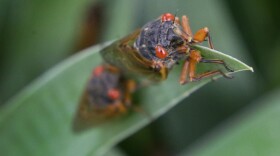-
When state officials announced a series of in-person and virtual meetings there were no in-person meetings slated for the Lehigh Valley, even though the region is the third largest metropolitan area in the commonwealth. A meeting in Allentown has been added to the schedule.
-
A decade or so after buying his South Whitehall Township home in the late 1960s, Fred Buse started recording the average temperature, precipitation type and amount, as well as any animal sightings in his backyard to study and track the health of the local environment.
-
Saturn is close to the moon tonight. You'll need binoculars or a small telescope to make out the rings.
-
A significant storm is set to soak the region this week, and it will come during the peak travel days ahead of Thanksgiving. Some areas could even see wintry precipitation.
-
While the goal is to transition communities to clean energy while creating jobs, there are still many unknowns about the projects. Even though there are two hubs slated for Pennsylvania, it could be a while before the Lehigh Valley’s residents begin to feel any impacts.
-
First introduced by state Sen. Lisa Boscola, D-Lehigh Valley, in 2015 and approved by the Senate in July, the bill would increase the fine and direct any monies collected towards bald and golden eagle conservation efforts across the commonwealth.
-
Take a look at stories that ran throughout the week of which we are most proud, had a profound impact on readers or that you might want to look at again.
-
Fred Buse, 87, of South Whitehall Township, has been tracking climate change in his backyard for decades. Every day he records the high and low temperatures, precipitation, insects, birds and other animals. He has written “Anticipation: The Effects of Climate and Environmental Changes on the Annual Cycle of Life on the Flora and Fauna in a Suburban Backyard,” which was published in 2021.
-
Pre-Thanksgiving storm ahead: Your best-laid plans to hit the road for the holiday could be upended next week, forecasters warn.
-
Officials announced Wednesday the start of its Climate Challenge as part of a broader Climate Action Plan, with goals of making sequential steps in steadily reducing greenhouse gas emissions.
-
Less than 24 hours removed from the Lehigh Valley’s heaviest snowfall in three years, forecasters have a word of advice to offer: don’t put the shovel away just yet.
-
Tuesday's fast-moving storm swept quickly through the Lehigh Valley but packed a wallop, bringing nearly a foot of snow to several spots.
-
“This has been a tremendously difficult storm to forecast due to rapidly changing conditions/temperatures expected and the difference in timing,” the National Weather Service said in its forecast discussion.
-
PPL Electric Utilities and Met-Ed reported more than 13,000 customers without power Tuesday morning as a winter storm swept through the region.
-
Several Lehigh Valley schools are closing Tuesday because of the weather forecast.
-
Early Monday, the National Weather Service issued a winter storm warning in effect for the Lehigh Valley for 7 to 10 inches of snow, with locally higher amounts over the higher elevations.
-
One area of potential concern at the Allentown State Hospital had been the presence of dioxins in the soil. Dioxins are a group of toxic chemical compounds that take a long time to break down in the environment, and can cause health problems in people.
-
Betelgeuse is the red supergiant star at Orion’s ‘right shoulder.’
-
Lehigh and Northampton counties are under a winter storm watch in effect from 12 a.m. to 6 p.m. Tuesday, with 4 to 8 inches of heavy, wet snow possible.
-
Take a look at stories that ran throughout the week of which we are most proud, had a profound impact on readers or that you might want to look at again.
-
It’s a special year for cicadas, insects known for their high-pitched mating songs. Two adjacent broods are expected to co-emerge for the first time in 221 years. Here's the next time they emerge in the Valley.
-
Northern flying squirrels are endangered, and the Pa. Game Commission works to improve their habitat. A group went searching for the species in the Poconos.


